Pickleball’s popularity has skyrocketed, drawing players from all walks of life to its courts. But as any enthusiast knows, mastering the game isn’t just about having fun—it’s also about sharpening your skills. One key aspect that can significantly up your game is improving your accuracy. It’s what separates the casual players from the court dominators.
To hone this crucial skill, targeted drills are your best friend. They’re not just exercises; they’re the secret sauce to placing your shots exactly where you want them, every single time. Whether you’re aiming to outsmart your opponent with a perfectly placed serve or a strategically hit dink, the right drills can transform your game from good to unbeatable. Let’s dive into how these targeted practices can make you a pickleball wizard.
The Importance of Accuracy in Pickleball
Pickleball, a sport that marries elements of tennis, badminton, and ping-pong, has skyrocketed in popularity in recent years. With its unique blend of strategy and physicality, the game is accessible to players of all ages and skill levels. As enthusiasts quickly discover, however, mastering pickleball requires more than just quick reflexes and a good serve. Accuracy is paramount. The ability to place the ball precisely where one’s opponent isn’t can turn the tide of a game.
In pickleball, the playing field is relatively small, and the no-volley zone, or “kitchen,” adds a tactical layer that’s unique to the sport. Players can’t simply rely on power; finesse and strategic placement are key to gaining the upper hand. That’s where accuracy comes into play. Being able to consistently hit your shots with precision means you can exploit your opponent’s weaknesses while minimizing your own vulnerabilities. In essence, a player’s accuracy can elevate their game from just being competitive to dominantly controlling the play.
The importance of accuracy extends beyond just winning points. It affects every aspect of the game, from serving to the exchange of volleys. A serve that barely skims the corner of the service box can set the tone for the point, putting pressure on the opponent from the outset. Similarly, an accurately placed volley can force the opponent to scramble, creating openings for strategic plays. These moments highlight how precision can not only score points but also mentally and physically wear down the competition.
Moreover, accuracy in pickleball enables players to effectively use the entire court. This means not only aiming shots away from opponents but also utilizing lobs, dinks, and drives to keep them guessing. The capability to place shots accurately within inches of the baseline or sideline can be the difference between a point won and a point lost. It encourages a more varied style of play and prevents opponents from anticipating your next move.
Practicing drills designed to improve shot accuracy is crucial. These exercises aren’t just about hitting the ball; they’re about hitting it with intention. Drills focus on the quality of the shot, requiring players to aim for specific targets or zones on the court. Over time, these drills develop muscle memory, making accurate shot placement second nature during high-pressure situations. Skills honed in practice translate into confidence during match play, where precision can intimidate opponents and sway the momentum in your favor.
Targeted Drills for Improved Accuracy
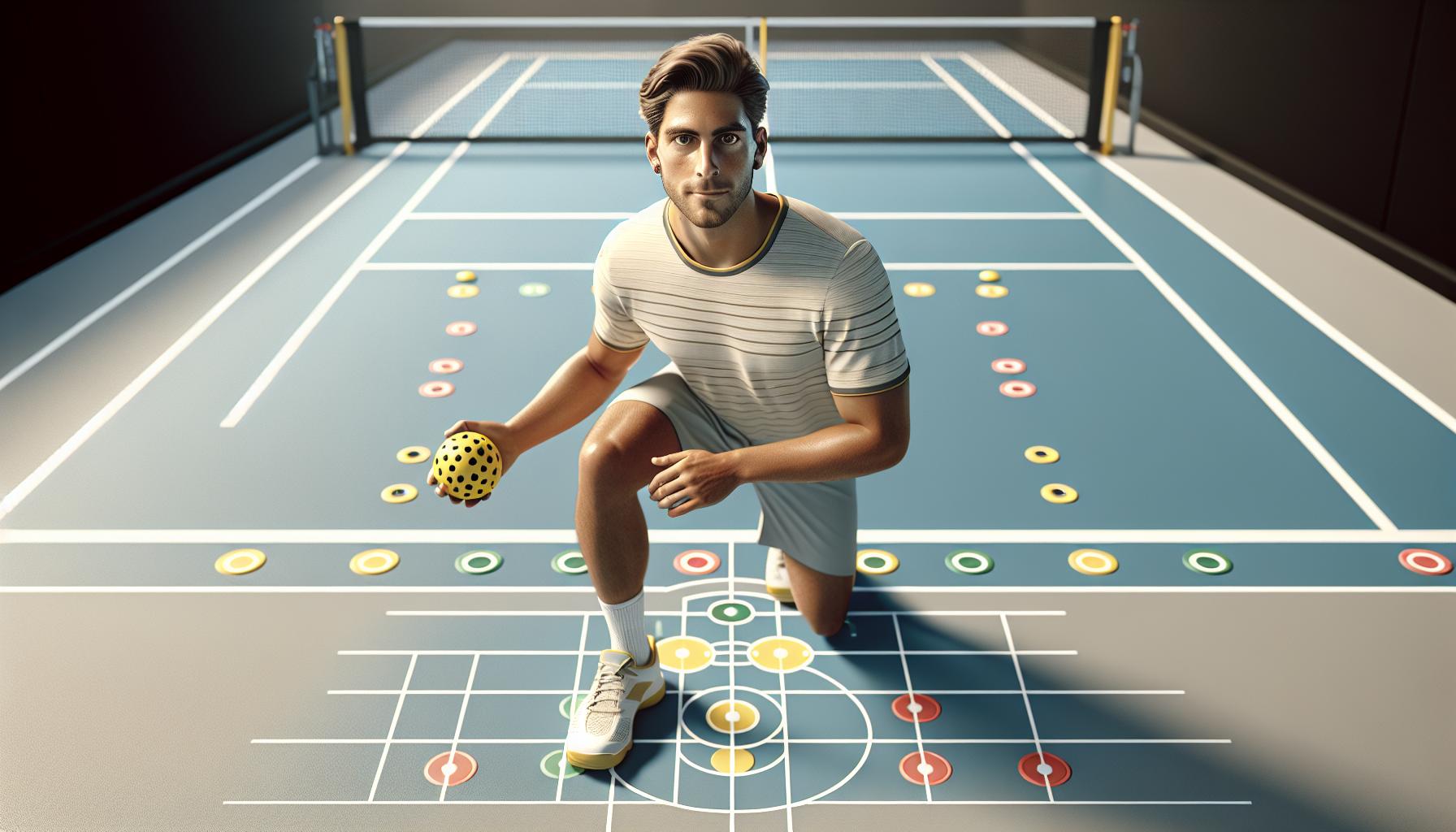
Improving accuracy in pickleball isn’t just about knowing what to do; it’s about practicing how to do it consistently. Targeted drills play a crucial role in enhancing a player’s precision on the court. These drills are designed to focus on specific aspects of the game, allowing players to develop the muscle memory necessary for accurate shots.
Serve Accuracy Drills
Serving with accuracy sets the tone for the entire game. Here are a few drills that can help:
- Target Practice: Place targets in different areas of the service box to practice serving to various zones. Start with larger targets and gradually decrease their size as accuracy improves.
- Serve Sequence: Practice serving to both backhand and forehand sides in a sequence. This helps in developing a versatile serving strategy that can confuse opponents.
Volley and Dink Accuracy Drills
Volley and dink shots are integral parts of the pickleball game, requiring pinpoint accuracy to keep the ball in play and out of the opponent’s reach.
- Wall Rallies: Hitting the ball against a wall helps in improving both backhand and forehand volley accuracy. Focus on hitting specific points on the wall to simulate real-game scenarios.
- Dinking Drill: Practicing dinks over the net with a partner or against a wall improves control over the ball. Aim for consistency in landing the ball in the intended kitchen zone.
Groundstroke Accuracy Drills
Accurate groundstrokes force opponents to move, creating opportunities for point-winning shots.
- Baseline Target Practice: Place targets along the baseline and practice hitting them from various positions on the court. This drill improves the precision of groundstrokes under different angles and distances.
- Crosscourt and Down the Line: Focus on hitting the ball crosscourt and down the line into specific zones. This teaches control over shot direction and depth.
Drills for Accurate Lobs
Lobs can change the momentum of the game when executed correctly.
- Lob Over Obstacle: Set up a net or a similar obstacle at the net height and practice lobbing the ball over it to land within the baseline. This drill helps in controlling the height and depth of lobs.
- Spend at least 15-20 minutes on each drill during practice sessions.
- Incorporate these drills into your regular training routine for consistent improvement.
- Record your progress to track improvement over time
Serving Drills to Nail Your Placements

In pickleball, serving is the opening gambit, setting the tone for each point. Serving accuracy isn’t just about making it hard for your opponent to return the ball; it’s about placing the ball precisely where you want it, dictating the play right from the start. As players aim to improve their game, incorporating targeted serving drills can have a substantial impact on their overall performance.
Focus on Target Zones
A successful serving strategy begins with identifying target zones on the court. These zones could be based on your opponent’s weaknesses or just areas that limit their return options. To start:
- Define three distinct target zones in your opponent’s service area.
- Place cones or markers in each zone.
- Practice serving to each zone, rotating after every serve.
By frequently switching targets, players not only work on their precision but also simulate the variability they’ll encounter during a match. This methodical approach helps in developing a keen eye for spotting opportunities to exploit during actual gameplay.
Serving Under Pressure
The mental aspect of pickleball cannot be overstated. Practicing serves when under pressure prepares players for the real challenges they’ll face. A simple yet effective drill involves:
- Setting a goal of consecutive successful serves within a target zone before moving to the next.
- Increasing the required number of successful serves gradually to raise the stakes.
- Incorporating a scoring system, where missing the target zone results in a point deduction.
This drill simulates match conditions, where the pressure to perform can affect service accuracy. It encourages players to stay focused and calm, especially when they’re close to achieving their goal.
Serve Consistency Drill
Consistency is key in serving, as it ensures that your opponent can’t easily predict or get comfortable with your serves. One way to develop this is by:
- Serving 100 balls with the intent of landing them in a specific zone.
- Tracking the success rate and aiming for incremental improvements.
This repetition not only ingrains the physical motion needed for accurate serves but also reinforces the mental discipline required to maintain focus over a prolonged period.
Serve and Move
In pickleball, serving and then quickly transitioning to the next play is crucial. A dynamic serving drill involves:
- Serving to a target zone and immediately moving into a ready position for a return.
- This drill emphasizes the serve’s accuracy while also preparing the server for the next shot, closely mimicking actual game play.
Mastering Shots with Strategic Dink Drills
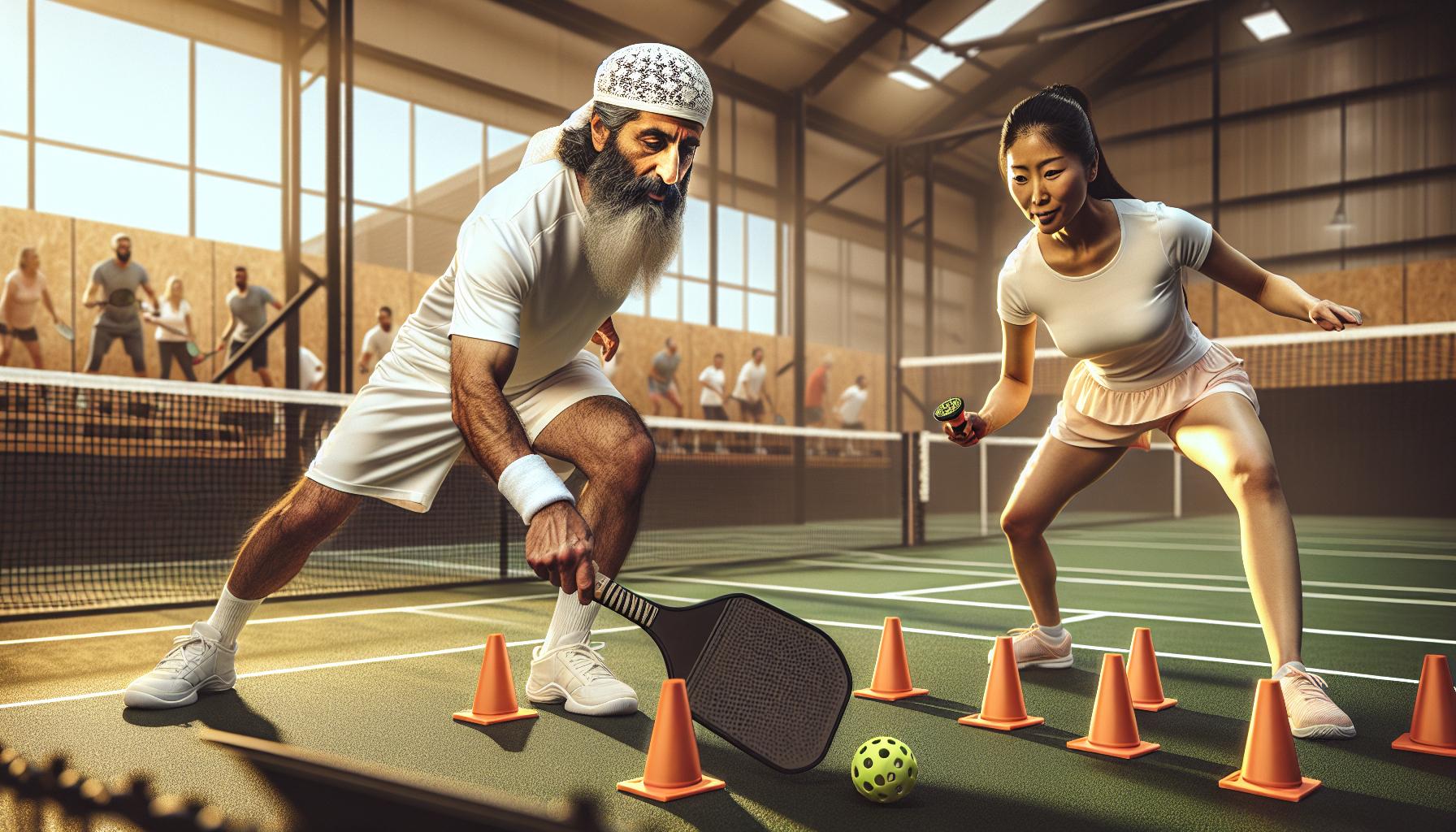
Dink shots in pickleball, often overlooked, are a game-changer for players aiming to outsmart their opponents with finesse and strategic placement. Mastering dink shots requires not just patience but also precision, making practice drills an essential part of any player’s training routine.
Focused Dink Practice
To start improving dink accuracy, players should begin with focused drills that emphasize control and placement. These drills involve targeting specific areas within the kitchen or non-volley zone, allowing players to hone their touch and feel for the ball. Setting up small, defined target areas with cones or markers can provide immediate feedback on accuracy.
- Target Zones Drill: Aim for zones close to the net, challenging yourself to land dinks that barely clear the net and drop steeply.
- Crosscourt Dink Drill: With a partner, practice crosscourt dinks aiming to keep the ball just over the net and within the bounds of the kitchen.
- Dink and Move Drill: Combine dink shots with footwork by moving laterally after each shot, simulating a game-like scenario that enhances both shot precision and agility.
Incorporating Pressure
Once comfortable with hitting accurate dinks in a static environment, it’s crucial to introduce elements of pressure and unpredictability that mimic match conditions. Doing so not only tests a player’s ability to execute precise dinks under stress but also improves their mental toughness and readiness for actual games.
- Timed Dink Challenge: Set a timer and aim to hit as many successful dinks within the target area as possible, increasing the pressure to perform under a time constraint.
- Random Feed Drill: Have a coach or partner feed balls to unpredictable locations, forcing the player to adjust their positioning and shot selection spontaneously.
Consistency and Variation
Dink accuracy isn’t just about hitting a single precise shot; it’s about doing so consistently while also being able to vary the shots as needed. This aspect of dink drills focuses on building a player’s ability to maintain accuracy over long exchanges and to adapt their shots based on the opponent’s position and expected reactions.
- Sequential Dink Practice: Engage in long dink exchanges with a partner, aiming to maintain a rally of 20 dinks in a row, focusing on consistency and placement.
- Variable Dink Drill: Introduce variations in the dink shots by alternating between soft, floaty dinks
Enhanced Court Dominance with Targeted Practice
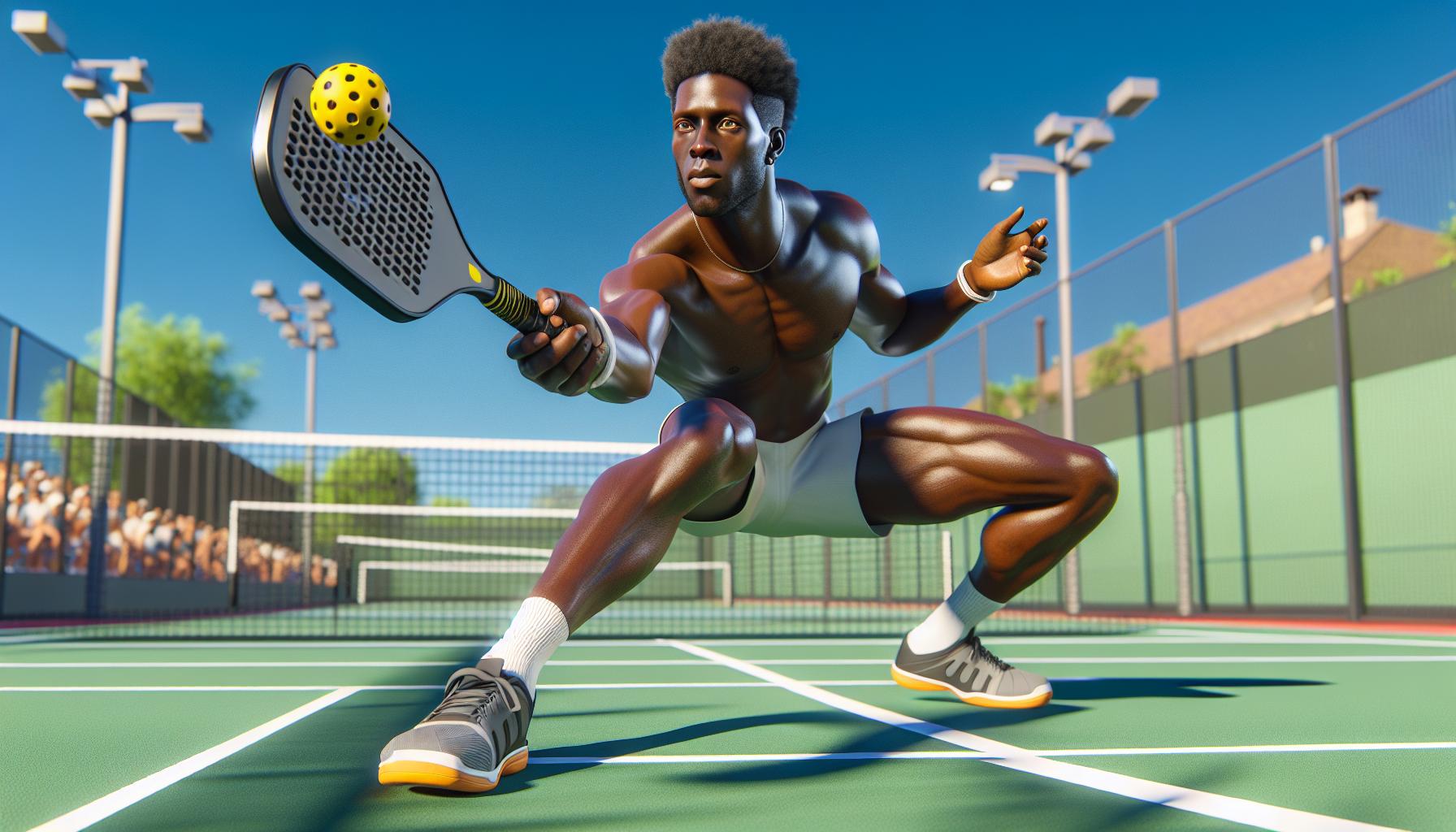
Building on the foundation of specific drills for serve, volley, dink, and lob accuracy, players can further enhance their court dominance with targeted practice strategies. These methods not only fine-tune individual shots but also integrate them into a cohesive strategy that maximizes control over the game.
One effective approach is Situational Practice, where players recreate specific game scenarios to understand how to apply their refined skills under pressure. This can range from defending against a strong serve to controlling the net with precise volleys. By simulating these situations, players adapt their responses to real-match conditions, improving their decision-making and shot selection.
Incorporating Movement Drills alongside accuracy training is crucial. Pickleball requires quick lateral movements and swift transitions between different court positions. Players should focus on drills that enhance agility and footwork, ensuring they can reach and accurately return balls in any game situation. Exercises like ladder drills and shadow playing can significantly improve a player’s mobility on the court.
Targeted Match Play is another vital component. Players can set specific goals during practice matches, such as maintaining a certain percentage of serve accuracy or winning points using only volleys. This focused approach encourages players to implement their skills in a competitive setting, closely mirroring actual game conditions.
To support these practices, incorporating Technology and Equipment can provide an edge. High-speed cameras and smart rackets can give players immediate feedback on their performance, highlighting areas for improvement. Additionally, using different types of balls during practice can help players adapt to various playing conditions, enhancing their versatility and preparedness for competition.
Practicing under Variable Conditions further prepares players for unpredictability during matches. Changing the playing surface, using different balls, or even practicing in various weather conditions can help players adjust their game strategies and maintain accuracy despite external factors. This adaptability is key to dominating the court under any circumstance.
Combining these targeted practice strategies with the accuracy drills previously discussed develops a player’s ability to control the game’s pace, direct the flow of play, and exploit opponents’ weaknesses with precision. Regularly dedicating time to these practices ensures continuous improvement and a competitive edge in the fast-paced world of pickleball.
Conclusion
Enhancing accuracy in pickleball isn’t just about hitting the ball harder; it’s about hitting it smarter. By dedicating time to the drills and strategies outlined, players can see a significant improvement in their game. It’s about quality over quantity, focusing on precision with every shot. Remember, practice doesn’t make perfect; practice makes permanent. So, make sure you’re practicing the right way. Embrace these drills, track your progress, and watch as your game transforms. With persistence and the right approach, dominating the pickleball court is within reach.

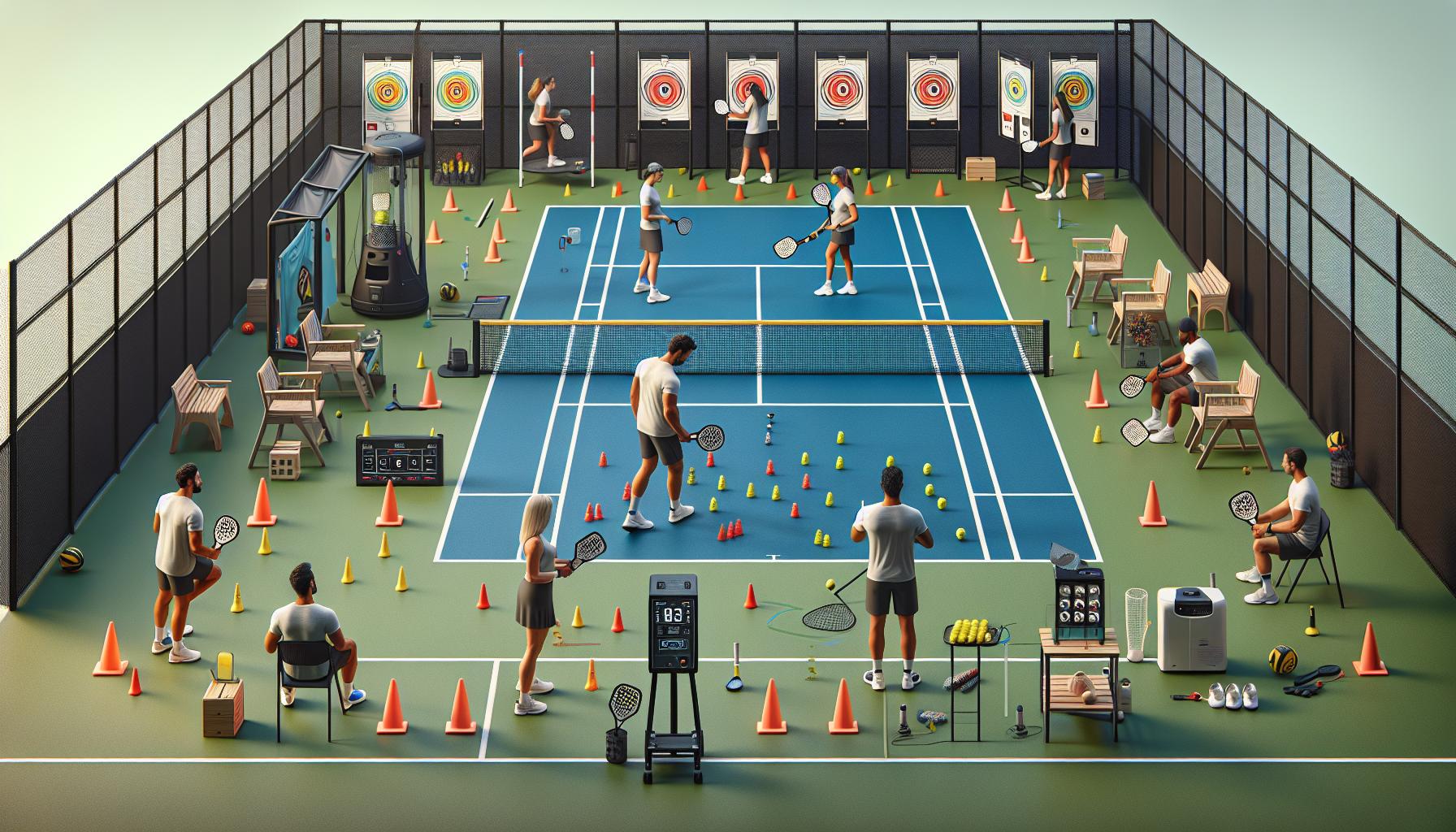









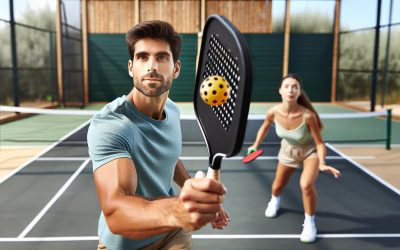
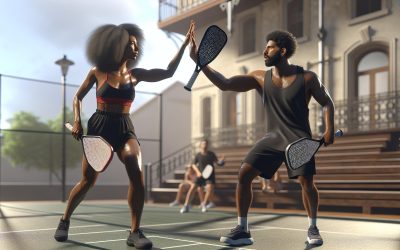

0 Comments